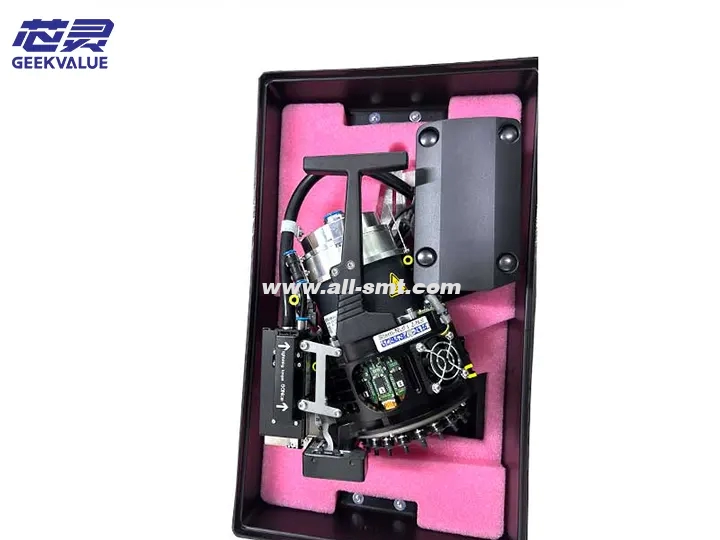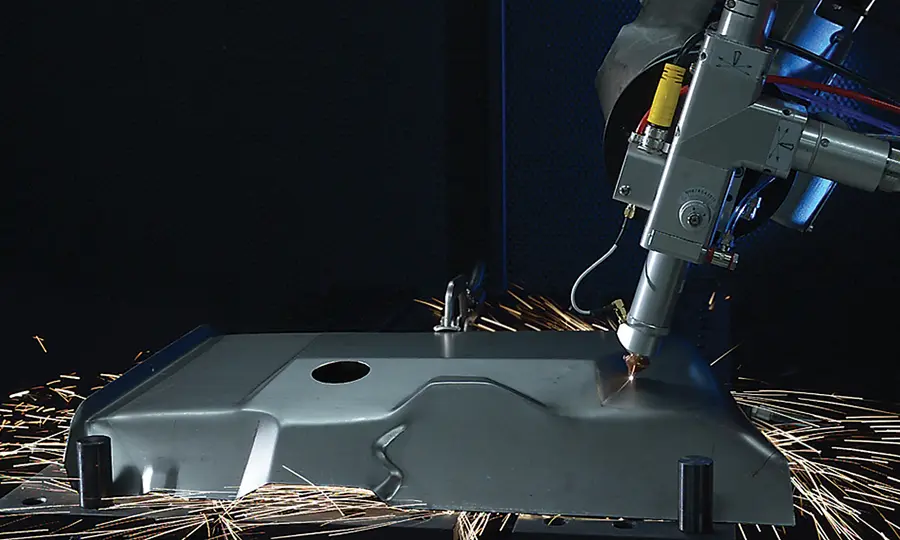ASM placement head is the core component of SMT placement machine in the electronics manufacturing industry. The following is a comprehensive introduction:
Placement head types, specifications and models
CP20P2 placement head: can handle components from 0201 metric to 8.2x8.2mm and 4mm in height, which can cover more than 60% of the parts of the product. It adopts pressure placement, can automatically learn the thickness and placement height of the parts, and automatically compensate for the warping of the PCB.
CPP placement head: can handle parts from 01005 to 50x40mm and within 15.5mm in height. It has a flexible placement mode, and uses the collection placement mode for parts within 27x27mm, and the pick-up placement mode for larger parts.
TH/VHFTH placement head: used to handle large size/heavy parts, and can handle components of 200x125x50mm and weighing up to 300g.
Principle
The ASM head uses the vacuum adsorption principle to absorb components and uses a precise mechanical transmission and positioning system to accurately mount the components to the specified position of the circuit board. Its visual system will identify and locate the marking points on the components and circuit boards to ensure the mounting accuracy. At the same time, by controlling the pressure, speed and stroke of the nozzle, it can adapt to the mounting needs of components of different types and sizes.
Advantages
High-precision mounting: The use of advanced visual positioning technology and precision mechanical structure can achieve high-precision component mounting, which can achieve an accuracy of 25µm @ 3 sigma.
Wide component adaptability: Different types of mounting heads can meet the mounting needs from tiny 01005 components to large 200x125mm components.
Efficient production: For example, the SIPLACE X series has a mounting speed of up to 200,000CPH, which can improve production efficiency.
Intelligent function: It has the functions of automatically learning part thickness, mounting height, etc., and can also automatically compensate for PCB warping, reduce manual intervention, and improve mounting quality.
Function and function
Material picking function: Pick up components through vacuum nozzles and accurately pick up required components from the feeder.
Positioning function: With the help of visual system and mechanical positioning system, accurately determine the mounting position of components on the circuit board.
Mounting function: Accurately mount the sucked components on the pads of the circuit board according to the set parameters and procedures.
Detection function: Some mounting heads are equipped with component sensors, which can detect whether parts are picked up and mounted before/after picking and before/after mounting, and detect abnormal situations in time.
Features
High flexibility: Different types of mounting heads can be quickly replaced according to production needs to adapt to the production of different products.
Strong reliability: After rigorous design and testing, it has high stability and reliability and can operate stably for a long time.
Easy maintenance: The structure is designed to be easy to disassemble and assemble, which is convenient for daily cleaning, maintenance and repair.
Common error messages
2279RV: The vacuum value of the nozzle opening is too high, and an error occurs when the placement head performs a reference run.
2295: The light barrier at the bottom of the Z axis does not respond during placement. Possible causes include nozzle problems, the movable ring of the sleeve moves too slowly, the light barrier at the bottom of the Z axis fails, external light interference, etc.
2297: The abandoned stepper motor fails. The reasons may be that the plunger moves too slowly, the plunger slot is contaminated, the abandoned motor fails, or the head board fails.
2299: The vacuum cannot be measured. It may be that there is no compressed air supplied to the Gantry, the silicone hose leaks or is improperly installed, or the vacuum card/vacuum generator fails.
2301: The air blow cannot be measured. The reasons may be that the silicone hose leading to the distribution board leaks or is pulled out, the distribution board fails, the spiral valve fails, etc.
Maintenance methods
Daily maintenance: Clean the patch head before and after daily operation, remove dust and flux residue, check whether the nozzle is blocked and whether the air path pressure is stable; apply surface grease to moving parts such as guide rails and screws, and confirm that there is no abnormal sound or jamming in the transmission mechanism; perform patch head origin reset and visual system self-check after powering on.
Monthly maintenance: disassemble and clean the vacuum generator and solenoid valve, check the aging degree of the sealing ring; test the spring elasticity and vacuum adsorption force of the nozzle; tighten the power cord and signal line interface, and detect whether the circuit board has abnormal heating or oxidation.
Quarterly maintenance: verify the placement position repeatability through CPK test, use MAPPING correction tool to compensate for mechanical deviation; clean the oil inside the cylinder and filter, replace the gas circuit seal and aging air pipe; upgrade the control program and recalibrate the visual recognition parameters.
Annual maintenance: disassemble and check the wear of core components such as transmission gears and couplings, replace bearings and belts that have exceeded their life cycle; conduct a comprehensive inspection of equipment placement speed, throwing rate, energy consumption and other indicators, and formulate an optimization plan for the next year.
Common fault information and maintenance ideas
Patch head deviation fault: The fault phenomenon is that the patch head deviates from the predetermined position during the patch process, resulting in inaccurate component installation position. Possible reasons are wear of the mechanical parts of the patch head, such as guide rails, sliders, etc.; incorrect setting of patch head parameters, such as angle, speed, etc.; control system failure, resulting in inaccurate placement of the patch head. The maintenance idea is to check the mechanical parts and replace them in time if they are worn; adjust the angle, speed and other parameters of the patch head; if the control system is suspected to be faulty, professional inspection is required, and the control system is updated or repaired if necessary.
Nozzle blockage failure: The fault phenomenon is that the nozzle cannot normally absorb the component, resulting in the inability to install the component. Possible reasons include nozzle blockage, dust, impurities, etc.; nozzle wear, resulting in weakened suction force; improper nozzle parameter settings, such as suction force, speed, etc. The maintenance idea is to regularly use cleaning fluid to clean the nozzle and keep it clean; if the nozzle is severely worn, it needs to be replaced in time; adjust the suction force and speed of the nozzle according to the type and size of the component.








